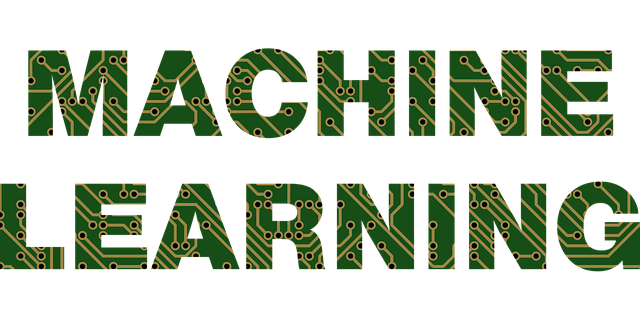Machine learning, a branch of AI, allows computers to “teach” themselves how to perform tasks through trial and error and massive amounts of data.
The latest developments in machine learning are all the rage. Everyone is interested in learning about and implementing machine learning so they may reap the benefits of this cutting-edge technology. One of the most sought-after skills in today’s labor market is expertise in machine learning engineering.
Open-source and private software, tools, libraries, and packages have made the life of a machine learning engineer easier in recent years. With the explosion in popularity of AI and ML, the number of specialized programs developed for this purpose has increased.
The following are examples of unique tools.
Understanding ML Engineering
Programmers who automate AI/ML models are called machine learning engineers (ML engineers).
ML engineers employ vast data sets to train algorithms that can learn cognitive tasks and make valuable predictions. In the inference stage, these systems serve real users in production.
Machine learning engineers prepare data, create and train models, and deploy models to production.
ML engineers operate in a data science team, including data scientists, analysts, IT professionals, DevOps experts, software developers, and data engineers.
What are Machine Learning tools?
Data mining, predictive modeling, and machine learning are algorithmic applications of artificial intelligence that enable systems to learn and improve without human input. They make the software more accurate than programming. A model or algorithm collects data from the world, which is sent back into the model.
They can forecast search patterns, develop recommendation engines, filter spam, build news feeds, detect fraud and security concerns, and more. Unsupervised, semi-supervised, supervised, and reinforced machine learning algorithms exist.
- Machine learning uses supervised algorithms. It requires a person to program both the input and the desired output and provide feedback on the accuracy of the results.
- Unsupervised algorithms are used for complex processing tasks like image recognition, speech-to-text, and natural language generation.
- Semi-supervised algorithms are typically middle-ground.
- Reinforced algorithms repeat processes until they produce the best results. Until the algorithm learns the best technique, attempts that generate these positive results are rewarded, and those that don’t are penalized.
Supervised, Unsupervised, and Natural Language Processing are covered in the Machine Learning course. It teaches Deep Learning, Graphical Models, and Reinforcement Learning.
- Python
Python is the AI tool to explore. It includes countless free tutorials and a strong support network. Due to its stability, flexibility, and usability, Python is preferable for AI, machine learning, data analytics, and visualization projects and applications.
Most engineering programming courses use this language. Python may rock like other trendy technologies.
Understanding all logic, systems, and learning is essential for engineers who want to prevent obsolescence.
- TensorFlow
Google engineers developed TensorFlow, a useful open-source library for machine learning model creation and training, deep neural networks research, and more. It is also a component of Google’s AI suite.
- Google AI Platform
Google’s AI products are like a Swiss army knife for developing AI systems. Vertex AI is a machine learning (ML) platform for creating, deploying, and scaling AI models. AutoML uses Vertex’s features to save time training ML models and AI building blocks for incorporating vision, language, conversation, and structured data into applications.
- IBM Watson
IBM has extensive industry connections and a long history of technological innovation, so it has a firm grasp on how AI is used by engineers across disciplines to analyze data, determine what data is most valuable, and automate tedious tasks. Thanks to this AI tool from IBM’s Watson portfolio, developers, data scientists, engineers, and others may use Watson Studio’s streamlined deep learning workflows and simple model creation, training, and deployment capabilities.
- Microsoft Copilot
Microsoft already provides Azure AI, a suite of AI services for programmers and data scientists to create and release AI-based applications. Microsoft and OpenAI have recently released a solution for AI pair programming called GitHub Copilot. The preview release of the artificial intelligence tool Copilot is now available for those using Visual Studio Code.
- Google Cloud ML Engine
Developers and data scientists can use Google’s hosted platform, Google Cloud ML Engine, to train and test high-quality machine learning models. This program is useful when training a classifier that requires millions or billions of data points. When the algorithm is complex, this is especially helpful.
- Apache Mahout
Implementing an algorithm quickly benefits mathematicians, statisticians, and data scientists. As a mathematically expressive Scala DSL framework, Apache Mahout is based on the distributed linear algebra paradigm. The Apache Software Foundation has released it as a free and open-source project.
- Knime
Knime is a graphical user interface (GUI) based open-source machine learning application. Its primary function is to store and organize information. Knime’s best feature is that it can be used by those who have yet to gain experience with computer programming. Knime’s services are still available for use.
In addition, it does data processing using the construction and execution of several distinct workflows. The included repositories are teeming with various nodes. The next step is to transport these nodes through the Knime gateway. Finally, a node workflow is developed and carried out.
- Weka
Weka, the next generation of machine learning tools, is warmly welcomed. It’s free and available to the public as well.
You can use this resource in the classroom or laboratory. A graphical user interface grants access. On top of that, Weka provides integration with a plethora of additional machine-learning resources.
Closing thoughts
Working with machine learning is terrific. Every business case and machine learning problem doesn’t require one tool. Since most of the tools are interoperable, combining them may be best.
The tool you use relies on your algorithm’s need, experience, and price. The machine learning library should be simple.
ML tools are convenient once you learn them. You can play with data, train models, create algorithms, and discover new ways. Once you understand Machine Learning techniques at Simplilearn online learning platform, this is achievable.







